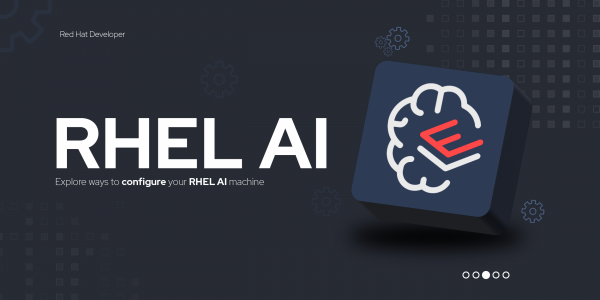Overview: Download, serve and interact with LLMs on RHEL AI
Granite Models for enterprises can benefit
The Granite Code model family offers a range of large language models (LLMs) with sizes from 3 to 34 billion parameters, making them suitable for diverse enterprise applications, from complex application modernization to memory-constrained on-device use cases. These models are open-source and licensed under the Apache-2.0 license, ensuring complete transparency in training datasets.
Optimized for enterprise software development workflows, Granite Code models excel in tasks such as code generation, bug fixing, and code explanation. Evaluation across a comprehensive set of benchmarks consistently shows that Granite Code models achieve state-of-the-art performance among open-source code LLMs. For example, the Granite-8B-Code model competes effectively with other open-source models of similar size, as demonstrated by results from the HumanEvalPack, which spans three coding tasks and six programming languages.
Granite’s versatility and open-source approach make it a powerful tool for enterprises looking to integrate advanced AI solutions while maintaining transparency and control.
Enterprise support, lifecycle & indemnification
RHEL AI provides enterprises with a trusted and reliable platform, offering 24x7 production support to ensure smooth AI model deployment and operation. Red Hat extends its commitment to enterprise-grade solutions by offering an extended model lifecycle, ensuring that Granite models receive continuous updates, maintenance, and improvements over time. Additionally, enterprises benefit from model IP indemnification, protecting them against intellectual property risks associated with model usage. This combination of support, lifecycle management, and indemnification makes RHEL AI a dependable choice for integrating and scaling AI models in mission-critical environments.
Model alignment with InstructLab
Scalable, cost-effective solution for enhancing LLM capabilities and making AI model development open and accessible to all users. Serve and Chat with the model, Taxonomy and version control of model. Gather and prepare training data with taxonomy. Synthetic data generation, Model Training, Serve and chat with the new model.

